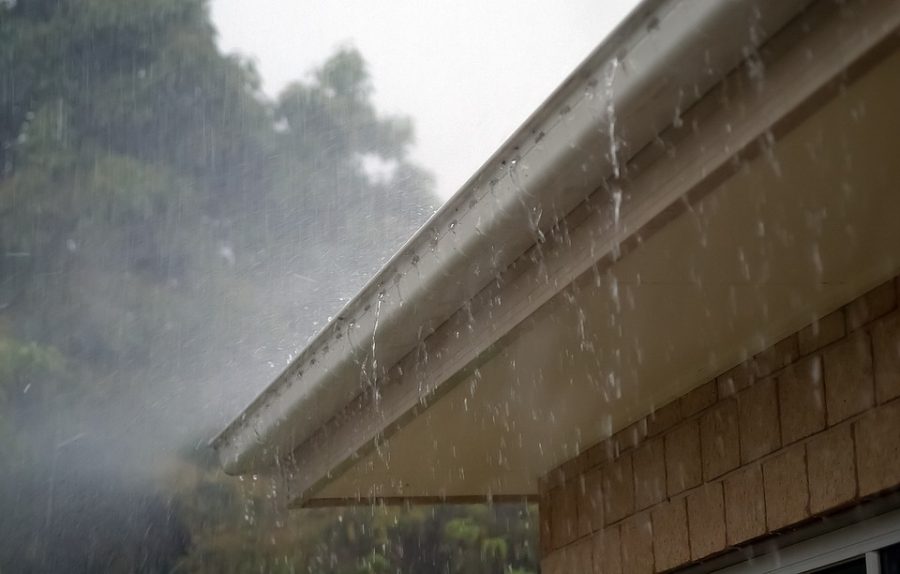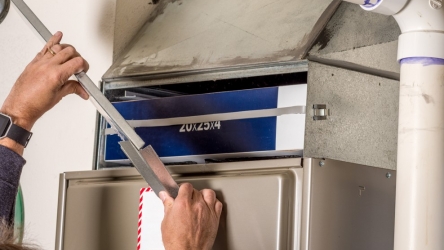
With Springtime quickly approaching, it’s important to be prepared for whatever the weather throws at us. When weather conditions become unpredictable, you might forget about protecting your home and making it water-proof this spring.
If you have a finished basement, leaks can cause serious damage to your home. This damage is often caused by static water pressure that comes from groundwater as it filters through the soil. The good news is that there is modern technology for drainage and waterproofing systems that can help to prevent these types of problems.
In addition, your roof is in charge of standing up to all kinds of weather conditions. Snow, hail, sleet, and the endless cycles of thawing and refreezing can cause leaks which means water can infiltrate and cause damage to the interior of your home. What do you do to make your roof waterproof and prevent the rain from spring from causing damage to your roof? Taking the time to schedule an annual roof inspection just before spring hits may be the solution. Below are a few ways you can keep your entire home in excellent condition this year.
Conduct a Roof Inspection
Every spring, you should get a professional roof inspection. Ice dams could damage your roof. Typically, ice dams form when heat from a house or commercial building warms the ceiling from below, melting snow. As the water later freezes, it can damage the roof, and the continuous freezing and thawing water can leak through the roof. While direct water damage is not always the case with ice, it can also cause other unseen roof damage like cracks and small leaks resulting from the weight of ice on the roof.
As you can’t often see these cracks or leaks, it’s essential to have a professional roofing contractor inspect your roof just before spring begins so that the spring rains won’t damage it further and allow water into your home.
If the inspection reveals deteriorated roofing tiles, you can get those tiles replaced quickly and thereby prevent any other damage. Professionals such as JCB Roofing/HHI, SC have the knowledge needed to recommend what materials should be used to replace certain parts of your roof.
Use Exterior Drainage Designs for Landscaping
The drainage on the exterior of your home is important to reduce static water pressure that can damage foundation walls. This can be done with permanent landscaping drainage, which can be buried beneath the surface of the soil or masked in the design of your landscaping with features like gravel ground covers for flowerbeds.
Consider Modern Geotextile Waterproofing Membranes
The waterproofing on the exteriors of foundations is often a sealant material like tar-like asphalt coatings that are outdated. Today, there are modern geotextile materials that can be used as foundation waterproofing membranes. These systems are specially designed geometrical shapes that help to reduce pressure against the foundation walls and protect your basement from damage.
Watch for Clogged Gutters
Leaf debris accumulates in gutters and drains during the fall. When your gutters become clogged, it is important to clean them out in order for water to run off of your roof without any obstructions. Additionally, shingles lose part of their granules over the winter, adding to the problem. If these areas aren’t cleaned after winter, the rain will dampen this mass down and create a mess of leaves and debris that will always remain wet in the spring. It can cause the water to overflow and puddle for long periods of time, causing leaks and structural damage to your home.
Install French Drainage Systems That Help Reduce Problems
There are also French drain systems that can be designed to protect your home from foundation problems. These are systems that use drain lines that are below the level of the foundation and carry runoff away from the footings. French drains can be good to reduce problems with static water pressure, as well as to protect against erosion problems.
Inspect Shingle Flashings
Your shingle roofs might have points where water can penetrate easily. Often, these points could either be pipe flashing or step flashing. Over time, the flashings deteriorate as a result of the weather. Having them inspected before spring can tell you whether these features need to be repaired. It is easier to repair and replace parts of your roofing when they are dry compared to when they have been recently exposed to water. Certain types of shingles are better at resisting water damage compared to others, so be sure to speak with a professional to determine the effectiveness of your roofing system.
Use the Right Mechanical System Designs
There are also mechanical systems that can be used to protect your foundation from damage. These can include systems like dry wells with pumps and sump pump wells inside that pump the water out. The mechanical systems can be a connection to French drains and other solutions to help keep the water out of your basement and protect your home from water damage.
In addition to keeping your home dry and intact, pre-spring home inspections can keep your property lasting longer. These are some tips that will help you deal with some of the water problems that cause damage to your home with modern technology for your waterproofing systems. If you want to ensure your home is protected from water problems, contact a waterproofing service and talk to them about some of these improvements using waterproofing systems throughout your home.







